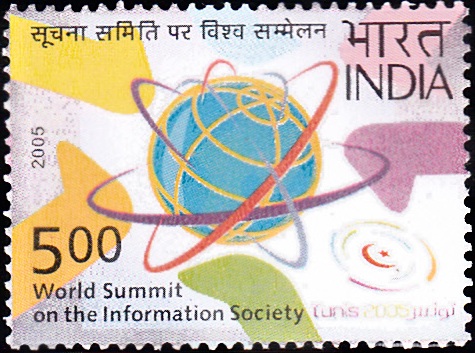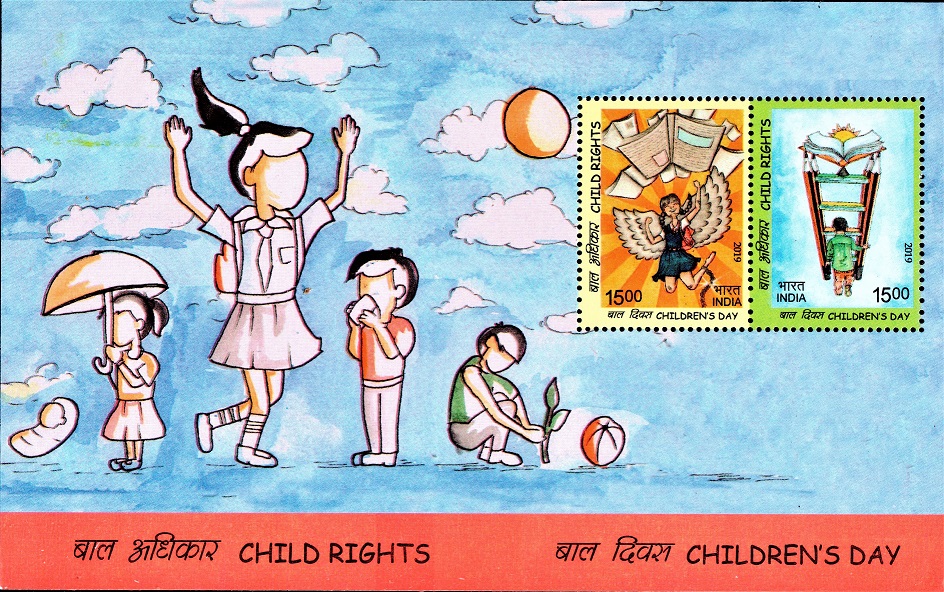
India on Children’s Day 1991
A commemorative postage stamp on National Children’s Day 1991 :
 Issued by India
Issued by India
Issued on Nov 14, 1991
Issued for : All kinds of media channels have been engaged to create an awareness of child survival and development. The release of this postage stamp, it is hoped, will further heighten this awareness amongst the masses and remind them about the need for care of the child.
Description of Designs : The special postage stamp depicts children, happy and attired in colourful costumes. The design of the stamp is based on the painting of an eight year old child, Arpi Snehalbhai Shah. The first day cover depicts the painting of another child, Hardik Hemantkumar Mehta. The Cancellation has been designed by Ms. Alka Sharma.
Type : Stamp, Postal Used
Colour : Multi Colour
Denomination : 100 Paise
Overall size : 3.91 x 2.90 cms.
Printing size : 3.55 x 2.54 cms.
Perforation : 13 x 13
Paper : Imported Un W/M adhesive Gravure Coated Stamp Paper
Number Printed : 10,00,000
Number per issue sheet : 35
Printing Process : Photogravure
Printed : India Security Press
About :
- “The building up of a nation depends on building men and women and the process of building men and women depends very considerably on what is done to children. It is, therefore, of high importance that we pay attention to the well-being and growth of children“. So said India‘s first Prime Minister, Pandit Jawaharlal Nehru, an ardent lover of children. The Universal Children’s Day is observed on his birthday on 14 November every year in our country to remind ourselves that children need us, that they should be the focus of all our activities and that their well-being is our prime concern.
- Since 1954, a special educational theme is selected every year to observe the Universal Children’s Day. The theme for 1991 is “Child’s Right to Special Care“. This is of particular importance as India was a party to the adoption, by consensus, of the Declaration of the World Summit for Children and Plan of Action for the Survival, Protection and Development of Children in the 1990s. The National Policy for Education adopted in 1986 has given highest priority to primary education and has given a thrust of elementary education by placing emphasis on universal enrolment and education of children up to 14 years of age. It is proposed that by 1995 all children would be provided free and compulsory education upto 14 years of age. The Government has launched many programmes such as Integrated Child Development Services (I.C.D.S.), Balwadi Nutrition Programme, Scheme for Children In Need of Care and Protection, etc.
- Three major events that took place at the national, regional and international levels set the agenda for children in the 1990s. These are the ‘Convention on the Rights of the Child‘, the ‘World Conference on Education for All‘ and the ‘World Summit for Children‘.
- The World Summit Declaration and Plan of Action for the Survival, Protection and Development of Children in the 1990s seeks to achieve a certain set of goals through the effective implementation/expansion of existing programmes in the areas of child health, nutrition and education and development of women. Based on this, a Plan of Action in consultation with various Ministries/Departments is being formulated, in keeping with our belief that children represent our greatest hope of the future.
- Text : Courtesy Department of Women & Child Development.







